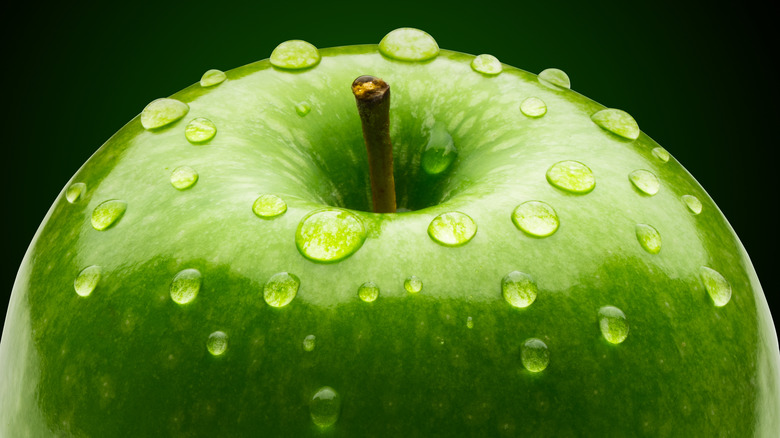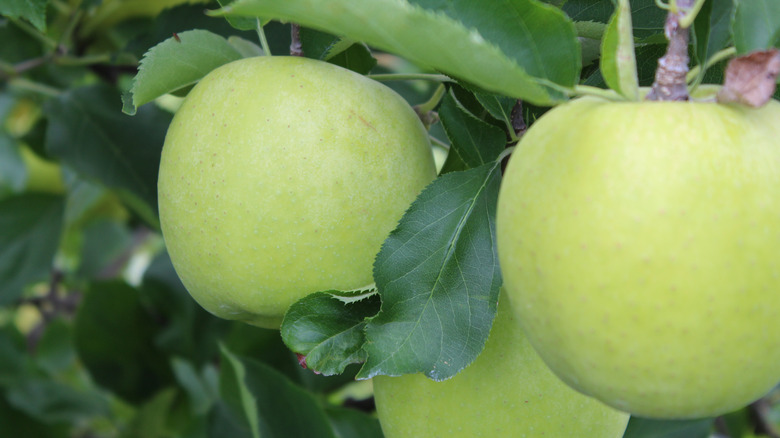Was The Granny Smith Apple Named After A Real Person?
The Granny Smith apple may seem like it has been with us forever, but in fact, it was introduced to the U.S. as recently as the 1970s. The tart, green apple originated in Australia in 1868, according to Specialty Produce, and although it soon received acclaim for its cooking versatility, it wasn't approved for export until 1895. The apple variety's subsequent spread around the globe has been slow but steady. It didn't reach the U.K., for instance, until the 1930s, and took another four decades to arrive in the United States.
Wherever it has gone, the Granny Smith apple has been beloved by cooks for its versatility. It's a great choice for soups and salads, notes Allrecipes, and is a go-to apple variety for everything from apple butters and applesauces to apple fritters and apple dumplings. Where it truly shines, though, is in the baking realm. Bon Appétit confirms its supremacy as the preferred variety for baking — it maintains its shape wonderfully when heated, and offers a delightful combination of both sweetness and tartness — although when it comes to making good old-fashioned apple pie, per The Washington Post, it's often paired with other varieties for added sweetness.
The most interesting thing about Granny Smith apples isn't their versatility, however, but their origin story. Was there a real Granny Smith involved in the apple's invention?
The story of Granny Smith and her apples
The answer is yes. The apple variety is named for Maria Ann Smith, aka Granny Smith. The Smiths emigrated from England to Australia in the late 1830s, according to the BBC, settling on farmland near Sydney. Maria Smith's husband was a farmer, and she was no stranger to cultivation herself, having grown up in an area where fruit orchards were common. This experience would come in handy.
The cross-pollination that resulted in the first new Granny Smith apple was almost certainly an accident. Apparently, HGTV notes, Smith was composting French crab apples, which she had been using to cook, when the seeds from them were pollinated by a nearby tree. From this propitious event, a new tree was born in 1868. But Smith, who was delighted with the resulting apples, had to know how to nourish her new tree to maturity, and how to propagate it to guarantee its long-term success. This was the trickiest part, per the BBC, and she proved up to the task, thus ensuring her enduring legacy.
While Smith herself died only two years after the first tree was born, a neighbor, Edward Gallard, acquired a portion of the Smith property and continued growing Granny Smith apples, per the Australian Food Timeline. By 1889, the new apple variety was one of the stars of the Castle Hill Agricultural and Horticultural Show. Six years later, it would begin its slow and steady journey around the world.

